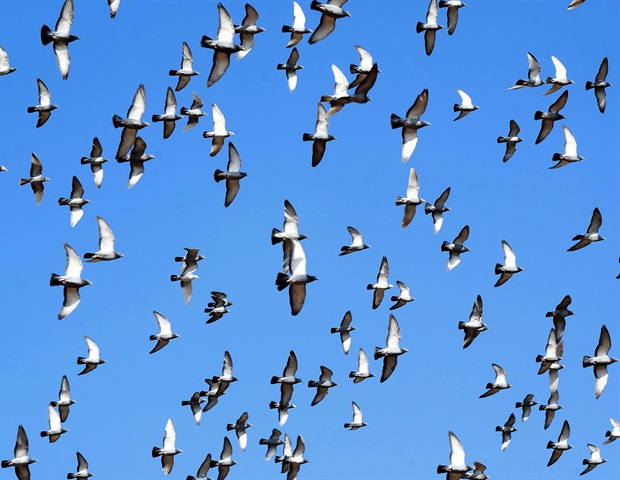Re: Pakistan: December 18+, WHO Begins Investigations
Since we're into the realm of speculation, why not delve into what might have happened while caring for an ill patient in a Pakistan hospital.
I do not know the norm in Pakistan hospitals, but I do know that in China hospitals the family members are the nurses. Is it similar? What role did the brothers play in the care of the patient?
The two brothers could have been charged with cleaning up vomit or incontenance. A simple, messy clean up could have exposed them to an overwhelming viral load, even if they weren't genetically related. Frankly, we need much more detailed information about the care of the index case.
I admit being frustrated with the rampant use of "H2H" in these situations.
"H2H" is such an ill-defined term in all these news reports and commentaries. If it is the WHO's phase 3 definition that we're concerned about: [ "phase 3: a new influenza virus subtype is causing disease in humans, but is not yet spreading efficiently and sustainably among humans" ] surely the contact with large quantities of shedding material is insufficient to meet this definition.
"Casual contact" H2H, as mentioned yesterday in a report, would be very alarming. How can being immersed large amounts of viral material, which may plausible in this hospital envrionment, qualify?
J.
Since we're into the realm of speculation, why not delve into what might have happened while caring for an ill patient in a Pakistan hospital.
I do not know the norm in Pakistan hospitals, but I do know that in China hospitals the family members are the nurses. Is it similar? What role did the brothers play in the care of the patient?
The two brothers could have been charged with cleaning up vomit or incontenance. A simple, messy clean up could have exposed them to an overwhelming viral load, even if they weren't genetically related. Frankly, we need much more detailed information about the care of the index case.
I admit being frustrated with the rampant use of "H2H" in these situations.
"H2H" is such an ill-defined term in all these news reports and commentaries. If it is the WHO's phase 3 definition that we're concerned about: [ "phase 3: a new influenza virus subtype is causing disease in humans, but is not yet spreading efficiently and sustainably among humans" ] surely the contact with large quantities of shedding material is insufficient to meet this definition.
"Casual contact" H2H, as mentioned yesterday in a report, would be very alarming. How can being immersed large amounts of viral material, which may plausible in this hospital envrionment, qualify?
J.

 </TD><TD>
</TD><TD>  </TD><TD>
</TD><TD> 
 </TD></TR><TR><TD bgColor=#efefef>
</TD></TR><TR><TD bgColor=#efefef>
 and TLR Ligands<SUP>1</SUP>
and TLR Ligands<SUP>1</SUP> </SUP></NOBR>, <NOBR>Peeraya Ekchariyawat<SUP>*</SUP></NOBR>, <NOBR>Suwimon Wiboon-ut<SUP>*</SUP></NOBR>, <NOBR>Amporn Limsalakpetch<SUP>
</SUP></NOBR>, <NOBR>Peeraya Ekchariyawat<SUP>*</SUP></NOBR>, <NOBR>Suwimon Wiboon-ut<SUP>*</SUP></NOBR>, <NOBR>Amporn Limsalakpetch<SUP> </SUP></NOBR>, <NOBR>Pongsak Utaisincharoen<SUP>*</SUP></NOBR>, <NOBR>Stitaya Sirisinha<SUP>*</SUP></NOBR>, <NOBR>Pilaipan Puthavathana<SUP>
</SUP></NOBR>, <NOBR>Pongsak Utaisincharoen<SUP>*</SUP></NOBR>, <NOBR>Stitaya Sirisinha<SUP>*</SUP></NOBR>, <NOBR>Pilaipan Puthavathana<SUP> </SUP></NOBR>, <NOBR>Mark M. Fukuda<SUP>
</SUP></NOBR>, <NOBR>Mark M. Fukuda<SUP> . Addition of<SUP> </SUP>this cytokine to monocyte-derived DC or pretreatment with TLR<SUP> </SUP>ligands protected against infection and the cytopathic effects<SUP> </SUP>of H5N1 virus.<SUP> </SUP>
. Addition of<SUP> </SUP>this cytokine to monocyte-derived DC or pretreatment with TLR<SUP> </SUP>ligands protected against infection and the cytopathic effects<SUP> </SUP>of H5N1 virus.<SUP> </SUP>




 0.5, analysis of variance) in 1918 wild-type–infected than in 1918 S66N mutant–infected mice. Together, these data indicate that PB1-F2 may play a role in immunomodulation, especially later in infection during viral clearance.
0.5, analysis of variance) in 1918 wild-type–infected than in 1918 S66N mutant–infected mice. Together, these data indicate that PB1-F2 may play a role in immunomodulation, especially later in infection during viral clearance.
Comment